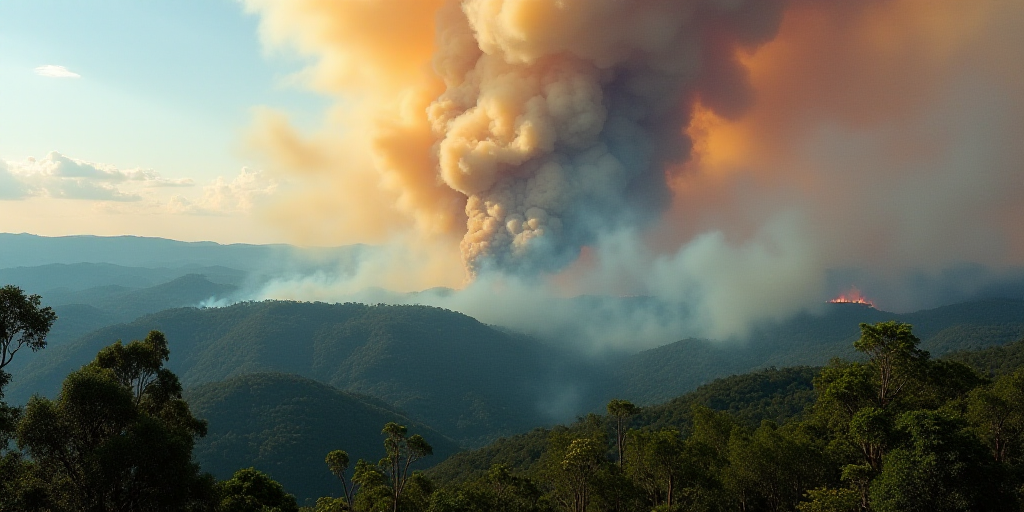Background on the Amazon Rainforest and Its Importance
The Amazon rainforest, often referred to as the “lungs of the Earth,” plays a crucial role in regulating global climate patterns and is home to an unparalleled diversity of plant and animal species. Covering an area larger than the size of many countries, it spans nine nations, with Brazil housing around 60% of the forest.
July’s Reduction in Fires and Its Significance
According to data released by the MapBiomas monitoring platform, fires in Brazil’s Amazon rainforest decreased by 65% in July compared to the same month in 2024, when a historic drought occurred. In total, 748,000 hectares were burned in July, marking a 40% reduction from the same period last year—the lowest monthly total since measurements began in 2019.
The Cerrado Biome: Most Affected Region
Although the overall decrease in fires is positive news for President Luiz Inácio Lula da Silva’s left-leaning government, which will host the UN’s COP30 climate conference in the Amazonian city of Belém in November, the Cerrado biome—known for its exceptional biodiversity—was hit hardest. This region accounted for 76% of the total area burned in Brazil, with 571,000 hectares affected. Despite the overall decrease, this figure still represents a 16% decline from the previous year.
Reasons for the Decrease in Fires
Felipe Martenexen, from the Instituto de Pesquisa Ambiental da Amazônia (IPAM), attributes the significant reduction in fires primarily to the return of rainfall, with a more intense and prolonged wet season. Additionally, Martenexen suggests that the environmental and economic damages of 2024, coupled with increased monitoring, may have prompted producers and communities to exercise greater caution.
Persistent Deforestation Concerns
Despite the decrease in fires, satellite measurements from the MapBiomas network show that 143,000 hectares of the Amazon rainforest still burned in July. Between January and July, 2.45 million hectares were affected by fires—a 59% decrease from the same period in 2024. The unprecedented drought experienced by Brazil in 2024, exacerbated by climate change, is believed to have contributed to the record-breaking fires the previous year.
Human Activity and Fire Initiation
Authorities and experts largely attribute the ignition of these fires to human activities, often illegal land clearing for grazing and agriculture purposes. As the Amazon rainforest continues to face threats from deforestation and climate change, ongoing efforts are essential to protect this vital ecosystem.
Key Questions and Answers
- What is the Amazon rainforest, and why is it important? The Amazon rainforest, often called the “lungs of the Earth,” is crucial for regulating global climate patterns and supports an unparalleled diversity of plant and animal species. It spans nine countries, with Brazil housing around 60% of the forest.
- What happened to fires in Brazil’s Amazon rainforest in July 2025? Fires in the Amazon rainforest decreased by 65% in July compared to the same month in 2024, with 748,000 hectares burned—the lowest monthly total since measurements began in 2019.
- Which biome was most affected by fires in July 2025? The Cerrado biome, known for its exceptional biodiversity, was the most affected region, accounting for 76% of the total area burned in Brazil with 571,000 hectares.
- What factors contributed to the decrease in fires? The return of rainfall, with a more intense and prolonged wet season, is primarily responsible for the significant reduction in fires. Increased monitoring and the environmental and economic damages of 2024 may have also prompted greater caution among producers and communities.
- Despite the decrease in fires, is deforestation still a concern? Yes, satellite measurements show that 143,000 hectares of the Amazon rainforest still burned in July 2025. Between January and July, 2.45 million hectares were affected by fires—a 59% decrease from the same period in 2024.
- What is the cause of these fires? Authorities and experts largely attribute the ignition of these fires to human activities, often illegal land clearing for grazing and agriculture purposes.






